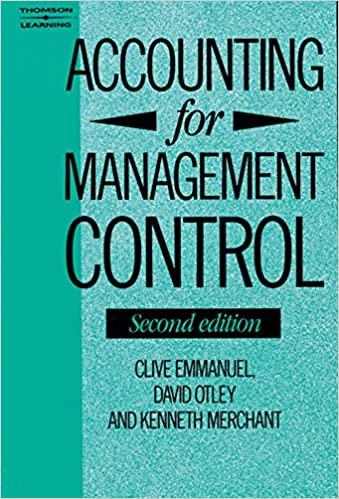For each of the following brief scenarios, assume that you are reporting on a dient's financial statements. Reply as to the type(s) of opinion (per below) possible for the scenario. Will the report require a basis for opinion paragraph, an emphasis, or other language? In addition: . Unless stated otherwise, assume the matter involved is material. If the problem doesn't tell you whether a misstatement pervasively misstates the financial statements or doesn't list a characteristic that indicates pervasiveness, two reports may be possible (i.e., replies 6 to 9). . Do not read more into the circumstances than what is presented. Do not consider an auditor discretionary circumstance for modification of the audit report unless the situation explicitly suggests that the auditor wishes to emphasize a particular matter. Types of Opinion # Unmodified-standard. h Unmodified with an emphasis-of-matter paragraph. c Qualified. d. Adverse, e Disclaimer Unmodified with an emphasis-of-matter paragraph or disclaimer. & Qualified or adverse. h. Qualified or disclaimer. 1. Adverse or disclaimer Other. Situation Answer 1. A company has not followed generally accepted accounting principles in the recording of its leases 2. A company has not followed generally accepted accounting principles in the recording of its leases. The amounts involved are immaterial. 3. A company valued its inventory at current replacement cost. Although the auditor believes that the inventory costs do approximate replacement costs, these costs do not approximate any GAAP inventory valuation method 4. A client changed its depreciation method for production equipment from the straight-line method to the units-of-production method based on hours of utilization. The auditor concurs with the change. 5. A client changed its depreciation method for production equipment from the straight-line to a units-of-production method based on hours of utilization. The auditor does not concur with the change. 6. A client changed the depreciable life of certain assets from 10 years to 12 years. The auditor concurs with the change. 7. A client changed the depreciable life of certain assets from 10 years to 12 years, The auditor does not concur with the change. Confined to fixed assets and accumulated depreciation, the misstatements involved are not considered pervasive 8. A client changed the method it uses to calculate postemployment benefits from one acceptable method to another. The effect of the change is immaterial this year but is expected to be material in the future 9. A client changed the salvage value of certain assets from 5 percent to 10 percent of original cost. The auditor concurs with the change. 10. A client uses the specific identification method of accounting for valuable items in inventory, and LIFO for less valuable items. The auditor concurs that this is a reasonable practice 11. Due to recurring operating losses and working capital deficiencies, an auditor has substantial doubt about an entity s ability to continue as a going concem for a reasonable period of time. The notes to the financial statements adequately disclose the situation. The auditor has decided not to issue a disclaimer of opinion 12. Due to recurring operating losses and working capital deficiencies, an auditor has substantial doubt about an entity's ability to continue as a going concem for a reasonable period of time. The notes to the financial statements do not adequately disclose the substantial doubt situation, and the auditor believes the omission fundamentally affects the users' understanding of the financial statements 13. An auditor reporting on group financial statements decides to take responsibility for the work of a component auditor who audited a 70 percent owned subsidiary and issued an unmodified opinion. The total assets and revenues of the subsidiary are 5 percent and 8 percent, respectively, of the total assets and revenues of the entity being audited








